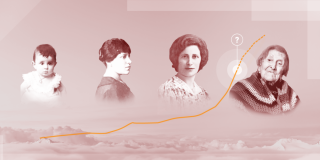The Influence of "Big Pharma" in the Medical Community
"Multiple studies have shown that doctors have doubts about the ability of their colleagues to remain unaffected by gifts from drug companies, attending sponsored dinners or other interactions with company representatives, but believe that they themselves are immune from being influenced."
Dr. Joel Lexchin, professor emeritus, School of Health Policy and Management, York University, Toronto
"We thought we were providing a balanced educational message [through teaching a curriculum on safe and responsible prescribing of opioid drugs]."
"It is obvious that the benefits of opioid therapy were exaggerated, and the risks underplayed."
Dr. Brian Goldman, host, White Coat, Black Art, CBC Radio
 |
| Big Pharma releases data : CTV News |
Dr. Lexchin has written a book out of his experience as a medical doctor and a professor of medicine, exploring and setting out what he has gleaned relating to the public relations campaigns that pharmaceutical corporations launch each time they release a new drug to the market, to influence medical practitioners of its efficacy and usefulness in their practise. Free samples pass between pharmaceutical salespeople and the medical community, and augmenting that simple expedient that allows doctors to hand out those samples 'free' to their patients, other emoluments impress doctors with the generosity of the drug firms, gaining their loyalty in response.
Not that this has suddenly become a new threat to physician neutrality in prescribing what he or she may be convinced is the best possible formula that may aid their patients' medical conditions. It is a situation that has been in common practise for as long as anyone can recall. And it has always been recognized for its pitfalls. That busy doctors are vulnerable to persuasion, and when gifts solidify a relationship the potential is there for unintended malfeasance. It merely becomes simpler for doctors to persuade themselves that a drug whose benefits they have been assured of will satisfy the need of the doctor-patient trust.
Dr. Lexchin's book once again raises concerns relating to those questionable ties between doctors and the pharmaceutical industry. Concurrently, a handful of drug companies have released information to the public declaring how much funding they make available to doctors. This was entirely voluntary in nature, reflecting an emerging movement to bring into law a need for pharmaceutical companies to disclose all and any money given to doctors. This disclosure requirement is common elsewhere, including in the United States, and Canada is preparing to join them in this legal requirement.
Of about 45 drug companies operating in and out of Canada, the ten that released data reported they had dispensed over $48-million to doctors in 2016, without divulging the amounts relating to individual doctors, added to the fact that some of the companies released numbers for only part of the year. No details, furthermore, were available of how that money had been spent; the lump sum figure was all that each of the ten companies provided for public consumption.
Dr. Lexchin's book goes into detail about the connections between pharmaceutical companies and medical students they seek to influence, along with organizations, and individual doctors. Out of the opioid epidemic now raging across North America came additional information about the influence drug companies can exert on individual doctors and the impact that influence can result in, relating to the proliferation of prescriptions. An example was the company that manufactures OxyContin, Purdue. It has been fined over $600-million in the United States on charges of misrepresenting how addictive its product is, but never fined in Canada.
Dr. Brian Goldman, a medical popularizer with a much-listened to program on CBC radio, wrote the forward to Dr. Lexchin's book. He had himself once been hired by Purdue with the understanding that he would develop and teach a curriculum on safe and responsible prescribing of opioid drugs to patients suffering from chronic pain. That curriculum urging caution and familiarity with the product's side effects effectively served to white-wash Purdue's responsibility; it had made the effort, if physicians still prescribed the product unheeding cautions, not its fault.
The trouble was Dr. Goldman witnessed first-hand that doctors continued prescribing large doses of opioids, not bothering in their busy practise to perform due diligence beforehand. For example, screening patients, or monitoring them for possible addiction. As a result, Dr. Goldman decided to distance himself from Purdue. He no longer gave lectures for Purdue, or for any other drug company, a collaboration that had tainted him as he concluded that he was being used and the cover he was giving to Purdue did nothing to offset their influence on how doctors viewed the addictive drug they had been assured was completely safe for patient use.

Labels: Canada, Conflict, Drugs, Health Care, Medicine, Pharmaceuticals























